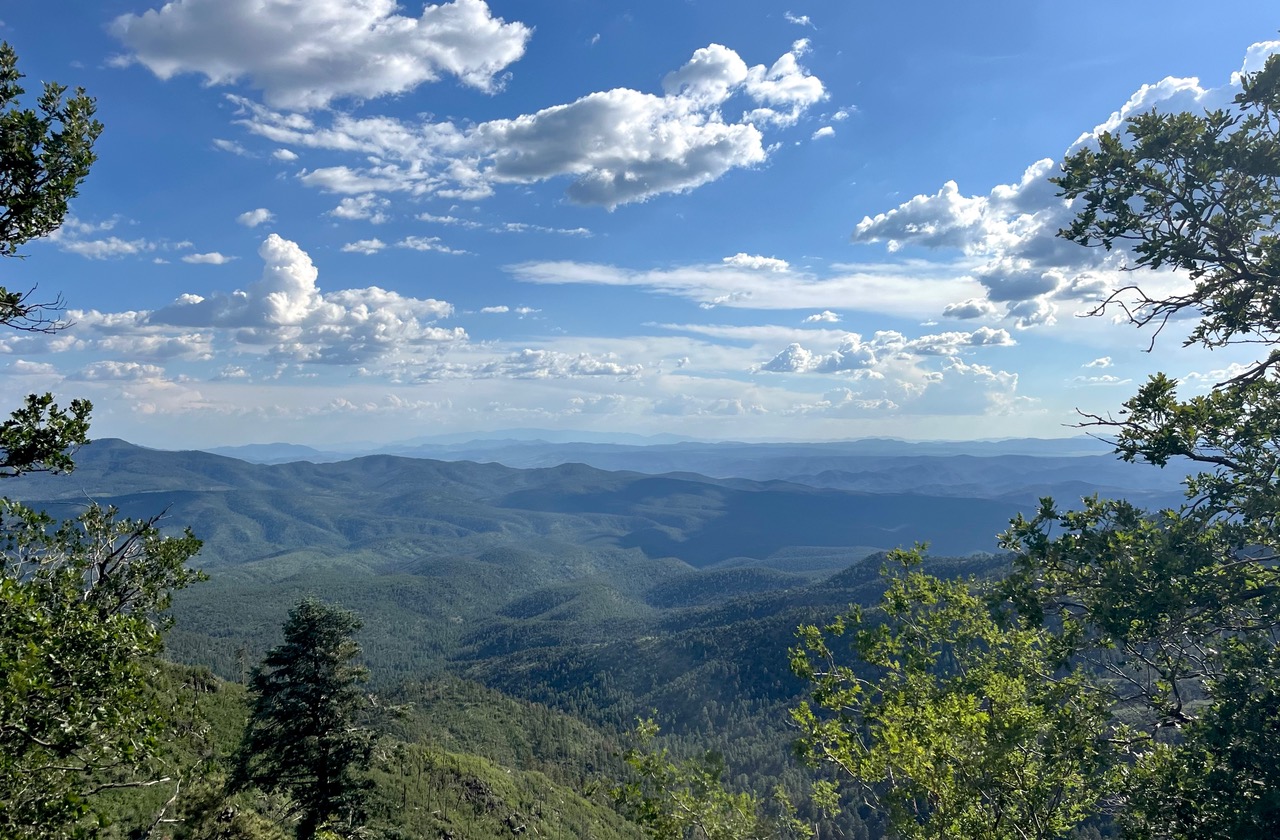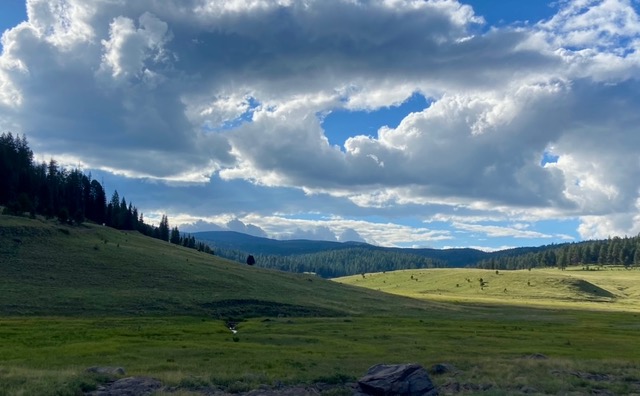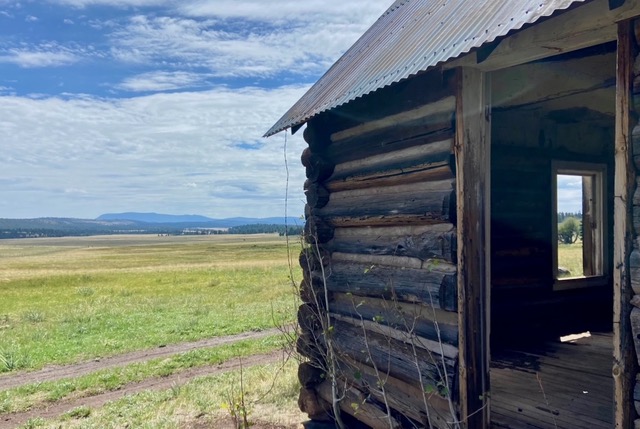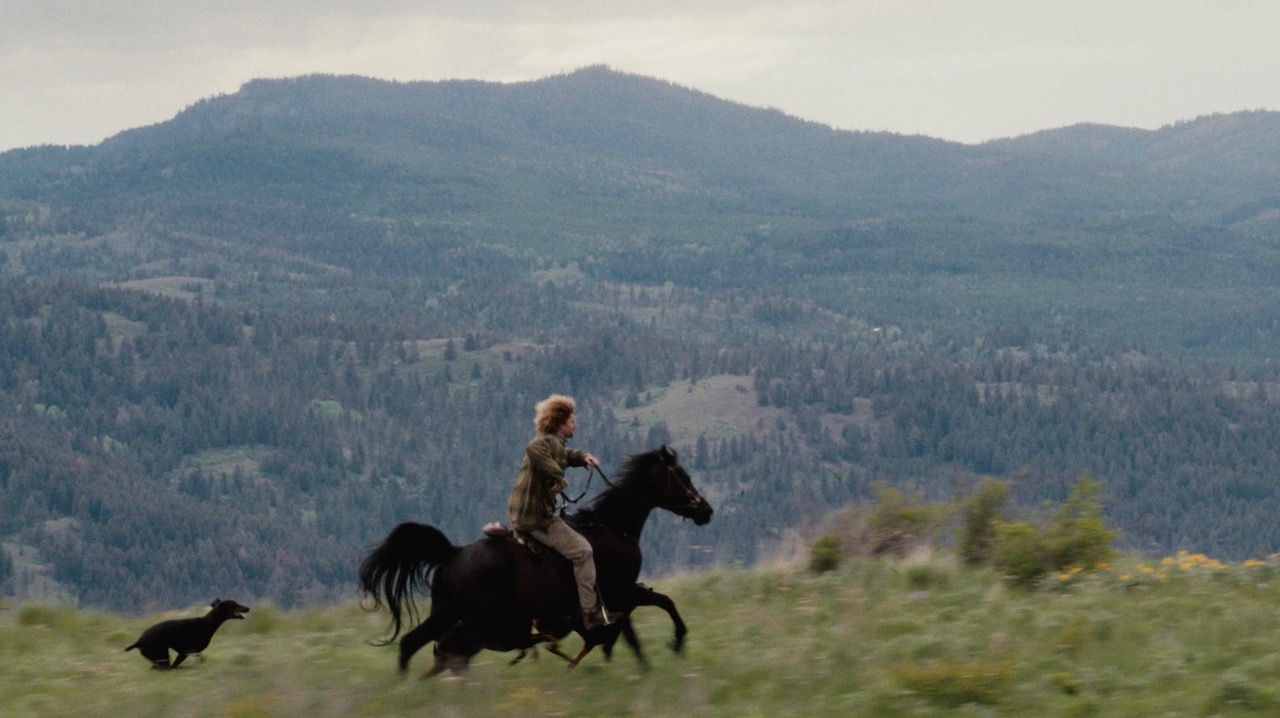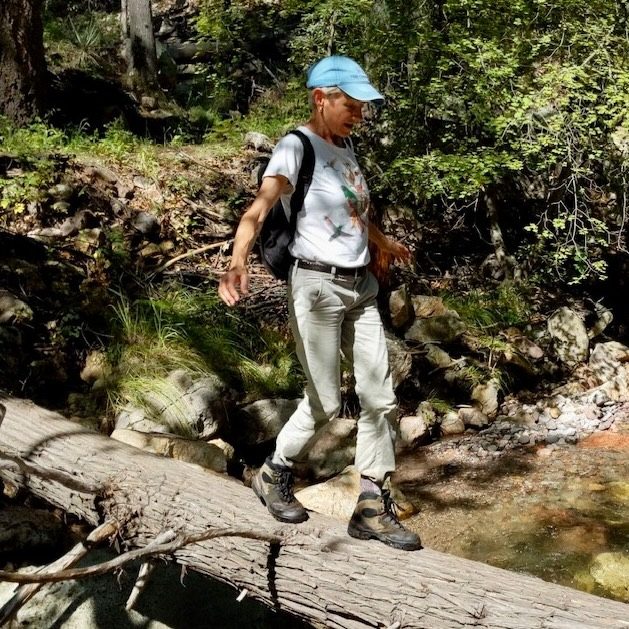A Weekend of Mexican Gray Wolf Advocacy and Education
August 22, 2025
Two memorable tributes to the Mexican gray wolf were the culmination of a recent road trip exploring remote areas of the Southwest: a New Mexico Game Commission‘s public meeting on wolf management with the Catron County Commission in Reserve, New Mexico, and the Grand Canyon Wolf Recovery Project’s “Big Lake Howliday Campout” in Arizona’s White Mountains. Both boosted my commitment to champion this remarkable creature, a widely misunderstood apex predator.
Admittedly, it was a bit intimidating to speak at the well-attended Commission meeting in the high school auditorium of a small rural town, famous for its fear and loathing of wolves. I was among the first of more than five dozen people to speak and thanked the Commission and the New Mexico Game and Fish Department for their recent release of a female wolf named Asha, her mate, and their five pups. I defended the Mexican gray wolves’ right to coexist with cattle ranching and offered several recommendations:
• Promote tolerance and coexistence (not extirpation) by halting the practice of trapping wolves for removal and euthanizing wolves that have killed livestock;
• Require livestock owners using public lands to remove dead cattle and properly dispose of them to discourage scavenging by wolves and other predators;
• Retrieve government-owned telemetry receivers on loan to ranchers and not share the codes to locate collared wolves, thus minimizing the illegal killing of wolves; and
• Thoughtfully and carefully address the concerns of Catron County ranchers, using verifiable facts and science-based evidence.
Of the 62 speakers, roughly 35 individuals supported Mexican gray wolf recovery efforts. I was grateful that all voices were heard with respect and decorum. Several New Mexico game commissioners acknowledged the need to explore workable solutions to ensure success of recovery efforts. I left the meeting feeling more hopeful than after similar meetings in Cochise County, Arizona, where earlier this year three county supervisors facilitated the swift removal of a pair of collared wolves and their two pups (one euthanized), then unanimously passed a poorly researched resolution that was full of misleading statements and that seeks to immediately downlist the Mexican gray wolf and initiate steps to delist this endangered wolf species.
From Reserve, I drove straight to Big Lake, Arizona, where a very full weekend event had been organized by the Grand Canyon Wolf Recovery Project (GCWRP). Almost 60 of us camped out together to learn about GCWRP’s outreach and education projects, for which 36 volunteers (including 25 students) devote hundreds of hours of research and service.
Several hikes were planned; on one we observed (and crawled into!) an abandoned wolf den. We then hiked to another spot to enjoy lunch near a rocky canyon where Aldo Leopold is believed to have shot the wolf that changed his life forever, while a volunteer read passages from Leopold’s Sand County Almanac. Before we departed, a small group hiked to an abandoned cabin to take in the expanse of a broad, lush meadow with Escudilla Mountain rising in the distance, accompanied by more readings of Leopold’s writings.
The highlight of the weekend was meeting range rider Daniel Curry and his three highly trained dogs. Based in northeast Washington, Daniel is a gentle man with humble beginnings, an unwavering devotion to animals, and a head of unruly curly hair. He has dedicated his life to the practical aspects of wolf recovery and their successful survival. Along with being featured in articles, interviews, and podcasts, Daniel stars in the documentary Range Rider, which showcases his keen perception and humane methods of wolf management. These include human presence, audible deterrents, carcass removal, and the strategic use of dogs, to name just a few.
Sometimes called the wolf ranger, Daniel practices nonlethal conflict mitigation with wolves, “helping humans co-thrive with large carnivores through conservation, connection, and education.” He founded Project GRIPH (Guarding the Respective Interests of Predators and Humans, and also the name of Daniel’s snowy white horse Griph, rescued from slaughter). Its mission is to “train, equip, and deploy range riders, and educate the public on how our methods can help animals and humans co-thrive together.”
This, I realized, is a viable solution for the Catron County ranchers and for livestock owners everywhere who experience depredations and instinctively reach for their guns. Here was proof that nonlethal approaches to human-wildlife conflicts (or even the prevention of such interactions) can be successful. All that is needed is proper funding to sustain much-needed educational/training programs and a willingness on the part of ranchers to coexist with predators without experiencing livestock loss or injury—to co-thrive harmoniously for the benefit of both rancher and predator. My mission is to help this vision become a sustainable reality.
Ali Morse has thrived in a variety of challenging positions in iconic small towns throughout the American West: as station manager for a public radio station (Paonia, CO), editor of a community newspaper (Patagonia, AZ), and executive director of a watershed protection and improvement nonprofit (Creede, CO). She now seeks balance in her life: as an advocate for wild creatures and places, watchdog for voting rights and lawful elections, and outspoken critic of elected officials’ mischievous behavior in Cochise County, Arizona.

